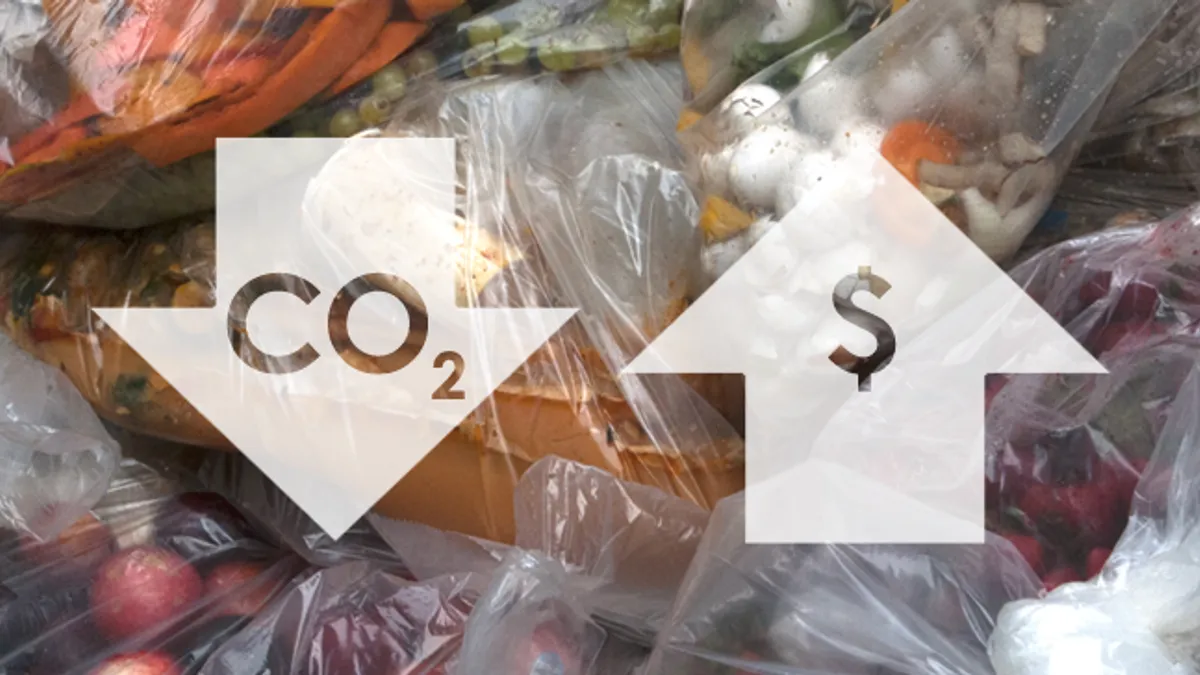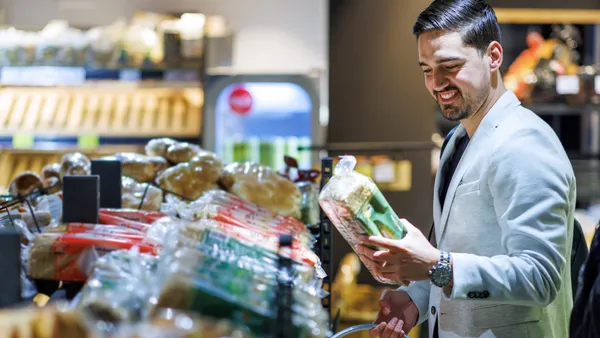- Nearly 40% of food waste occurs within the retail supply chain. Using predictive demand analytics to improve replenishment of perishable products is a huge opportunity for grocers to reduce both waste and carbon emissions.
- Improved demand forecasting can propel grocers towards sustainability. Many initiatives require large investments and extended time horizons to begin bearing fruit, but decreasing fresh food shrink with better analytics produces results immediately.
- Pursuing sustainability can be a profit enhancer. Focusing on perishable waste is a win-win proposition for grocers as both environmentally- and financially-friendly outcomes are concurrently achieved.
Sustainability is increasingly becoming a focal point for businesses in general and food retailers specifically. This is not surprising given that 1/3 of food produced globally is wasted. Of course, some of this waste occurs in household kitchens and on the farm, but studies estimate that nearly 40% of food waste happens within the retail supply chain.
Globally, grocery stores and restaurants account for over half a billion tons of food waste annually. While a glaring problem – food waste from these sectors accounts for ~3% of global carbon emissions (nearly as much carbon dioxide equivalent as the entire airline and shipping industries combined) – this also presents a significant opportunity for retailers looking to make their operations more sustainable.
Grocery chains can pursue any number of initiatives to reduce carbon emissions including programs that redirect waste to recycling plants, replace product packaging, or invest in new refrigeration and greener transportation. However, most of these approaches require significant resources, long timelines, and heavy upfront investments. Balancing costs and time with sustainability goals is a challenge.
One opportunity to address sustainability that grocers may be overlooking is enhancements that can be made to the core process of store-level replenishment in produce, dairy, meat, seafood, and other fresh food departments. Compared to other initiatives, improving demand forecasts is an easy way to get results quickly, and as it turns out, profitably.
A WIN-WIN OPPORTUNITY IN FRESH FOOD REPLENISHMENT
Layering specific predictive demand analytics onto current forecasting solutions is helping grocers balance the need for high on-shelf availability with limiting waste in perishable categories. Moreover, this sustainability initiative is one that can be operationalized within a couple of months with an investment that is quickly paid back via bottom-line gains.
The weather is a critical external variable that continually impacts sales significantly from product-to-product, day-to-day and from store-to-store. Because of this reality, grocers too often find themselves understocked in some locations and overstocked (resulting in waste) in others. By incorporating predictive demand analytics that directly measures this hidden component, food retailers can initiate a preventative solution in waste management.
There is ample room for improvement in demand forecasting as most grocers tend to lean heavily on recent sell rates to determine how many cases or units of a specific product should be replenished into individual stores. Recent sales trends are part of the picture but they are distorted by the weather conditions that influenced consumer purchasing in the past and do not factor in how the weather is going to change sales across a company's store footprint in the coming days or weeks.
For example, in Planalytics' work with grocers, leveraging demand analytics that quantify how changes in upcoming weather conditions will either increase or decrease sales of certain fresh food products has driven waste reductions up to 35%.
By integrating predictive weather-driven demand metrics directly into existing systems (ERPs, SaaS solutions, ML/AI platforms, databases, etc.), these companies are tackling waste and reducing carbon emissions in an automated, scalable, and ongoing way.
REDUCING WASTE IS THE "LOW HANGING FRUIT" GROCERS SHOULD FOCUS ON TO GET BIG RESULTS FAST
Planalytics has seen integrated weather-driven demand metrics reduce waste by an average of 12%. This sharp decrease in waste corresponds to an average of over 4% in decreased emissions.
Decreasing waste and emissions helps reach sustainability goals and also produces financial benefits. Improved demand forecast accuracy (20% or more for specific products, time periods, and locations) leads to lower inventory and perishable shrink costs. Additionally, many countries currently levy taxes tied to carbon emissions. Reducing waste also has the potential to reduce a grocer's tax expense.
By improving demand forecasting accuracy, Planalytics has seen that grocers build profit margins through increased sales and lower perishable waste costs. Typically, grocers capture an additional $3 million in EBITDA annually per $1 billion in topline sales.
Leveraging predictive demand analytics to adjust store-level replenishment across fresh food categories enables retailers to achieve a substantial reduction in waste. The decreased waste, good for both the planet and the bottom line, can propel businesses toward their sustainability goals rapidly. Retailers that choose this approach will find they can in fact proceed down the path to sustainability, profitably.
Learn more by downloading Planalytics' Leveraging Demand Analytics to Reach Sustainability Goals white paper.










